Farming in Romania
Farming around the world shares many similarities, but it's always fascinating to see how other people run their operations. Farm Trader's Chris McCullough visits a farm in Romania.
The mixture of owned and rented land is used for cereal production in Ialomița County, which is north-east of Bucharest and has Slobozia as its capital.
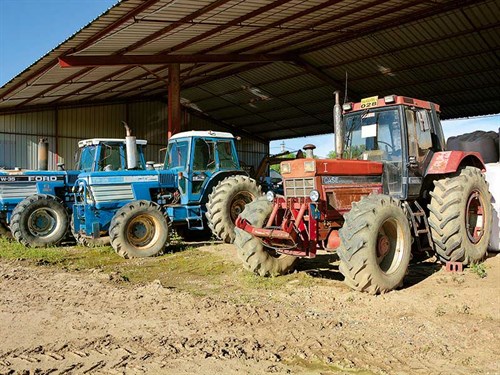
Arnaud runs an interesting fleet of machinery ranging from tractors manufactured in the ’60s and ’70s right through to the most modern equipment money can buy.
Most of his tractors and machinery were purchased by cash because any capital reinvested into the business is not taxable in Romania.
"We have five combines here on the farm along with 20 tractors," Arnaud says. "Some of the older tractors are the Universal brand that were made here in Romania, but the majority of them are Ford tractors from the ’80s that I bought when I came here."

There are also a number of TW25 and TW35 tractors in the fleet and a Case International 1455Xl that Arnaud purchased in the UK.
"Our more modern tractors are Case IH and Landini models, as we find both brands quite reliable and easy to operate. The combines are also Case IH models, and we have a few spares lying around the yard as well.
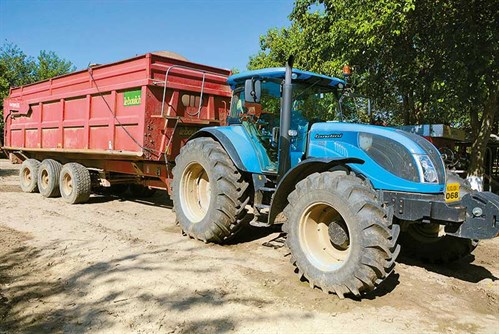
"We buy most of the machinery with cash. There are no European Union subsidies available for purchasing machinery like this."
In 2006, Arnaud spent around half a million euros (NZ$782,510) on machinery and the same amount again in 2009 to keep the fleet relatively modern.
Land policies
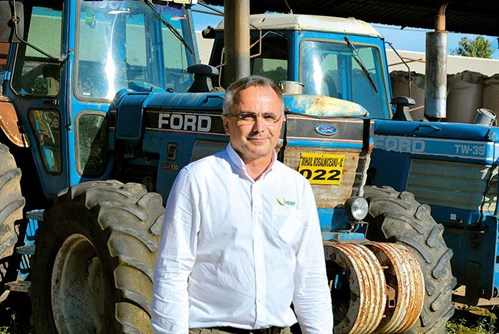
Flying into Romania, it’s easy to recognise the small strips of land that have traditionally been handed down through family generations, becoming smaller with each inheritance.
From the sky, these strips look like giant barcodes but it’s a system of farming that’s not going to disappear anytime soon for a number of reasons.
There are no fences between the strips, as the landowners know exactly where their strips are located, even though these are sometimes in a number of locations.

The normal procedure for these small landowners is to rent out their land to bigger farmers like Arnaud.
"I am a fan of technology in machinery, but working these small land parcels makes
it difficult to use the larger machinery there," Arnaud says.
Prior to 1989, all land was owned by the Romanian state, but since the revolution that same year, the land has been venturing into private ownership ever since.
Foreign investment in farming
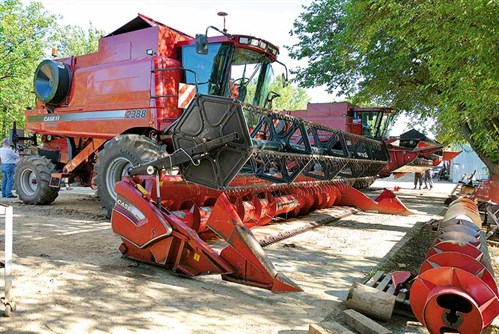
Romania is one of the few countries in Eastern Europe that permits foreigners to purchase land outright.
Currently, investors or farmers can buy good land in Romania for anything between €4000 (NZ$6260) and €8000 (NZ$12,250) per hectare.
Traditionally, landowners in Romania have handed down ownership of the land to the next generation. While renting land off several different owners presents its own set of challenges for Arnaud, it’s a system that he does not want to see ending soon.
The main reason is these smaller parcels of land attract more subsidies from the European Union and that makes good business sense for him.
"Although we do own some land ourselves, we also rent a fairly significant number of hectares from the smaller landowners," Arnaud says.
"One owner could have as little as three hectares of land or less, even down to five square metres, which means I have a lot of people to deal with when sorting rental agreements.
"These landowners hand down the land to their family when they pass away and the land parcels get smaller and smaller.
"Romania is not all like this, of course, as there are much bigger farms in the country, including the biggest one in the European Union.
"The European Union pays more subsidies for the smaller land parcels, so it doesn’t make sense for these smaller farms to merge and become bigger," he says.

Arnaud pays the landowner the current financial value of 1200kg of wheat per hectare of land rented or the value of 800kg of wheat plus 10% of the corn planted on that farm.
He says, "Romania joined the EU 10 years ago, and I, as the active farmer, receive the subsidies. We receive a higher rate of subsidy for smaller farms, so it doesn’t make financial sense for these small farms to get bigger.
"The EU pays more for the smaller land parcels, as it’s more difficult to make money off smaller areas. But it’s not easy. I have to negotiate with many landowners to set up the rental agreements, which are paid in terms of the current market value of 1200kg of wheat for every hectare.
"Or, if the landowner prefers, I pay 800kg of wheat per hectare plus 10% of the corn grown there. It can be complicated but that’s the way it works. In total, Arnaud pays out the value of 800 tonnes of cereal per year in rent. He receives a higher subsidy from the European Union in this region because of the smaller land parcels he is working with.
"This subsidy is currently 230 euros (NZ$360) per hectare for cereals. The highest payout from the EU is for tomatoes.
Irrigation challenges
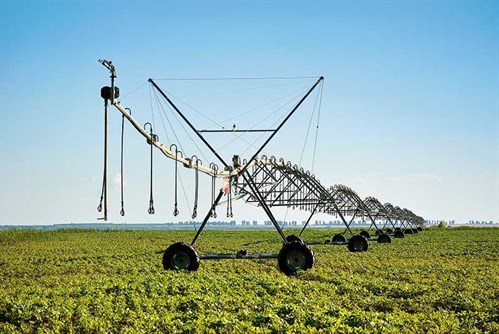
Arnaud is also the president of the Association of Corn Producers in Romania, a body that was created five years ago, so is well known in the arable industry. One of the biggest challenges with the land at Sopema Farm is irrigation.
In total, 1300 hectares are irrigated with pivotal installations. Water costs €0.7 (NZ$1.10) per 1000 cubic metres to irrigate the land if required when it is not raining.
In the dry years of drought, the farm can irrigate a total of 2000 hectares but only by using irrigation drums, which is a more expensive system to use.
Arnaud has also invested heavily in his grain storage capacity over the years but decided to shun the use of EU grants as, due to all the form filling and using stated suppliers, the project worked out "three times more expensive" than when going it alone.
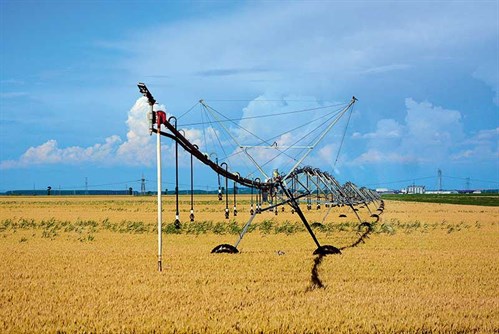
Sopema Farm now has a 14-cell silo with a capacity of 12,000 tonnes of corn equivalent on site, which works out about 50% more capacity than what Arnaud can produce in a year.
Last year, the farmer of French origin invested around €450,000 (NZ$704,259) in a soil drainage machine and another €450,000 on the drainage pipes.
"I have plans to drain over one thousand hectares because we have problems with flooding when we do get some real heavy rainfalls in short spaces of time," he says.
Arnaud employs 70 people at Sopema Farm, which is around one person for every 57 hectares of land he works.
This year, the farm has 3920 hectares sown out, including 350 hectares of rape, 300 hectares of barley, 870 hectares of wheat, 1000 hectares of sunflowers, 700 hectares of irrigated maize, and 700 hectares of irrigated maize.
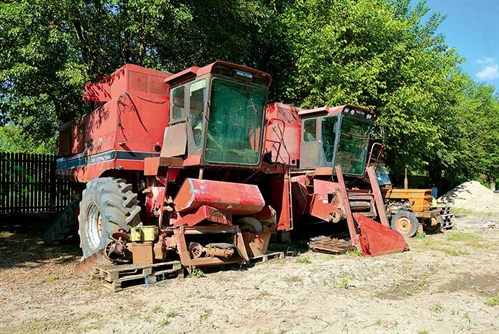
Yields in Romania are quite low compared to other countries in the European Union but Arnaud says his yields from last year’s harvest were respectable. With that in mind, he has currently 12,000 tonnes of various crops in storage awaiting better prices.
Last year, Arnaud harvested 3.5 tonnes per hectare of rape, six tonnes per hectare of barley, 5.8 tonnes per hectare of wheat, 3.3 tonnes per hectare of sunflowers, 12 tonnes per hectare of irrigated maize, and 4.6 tonnes per hectare of soybeans.
Arnaud is also in the favour of using GM crops in Romania but thinks it will take some time before they are permitted to be sown in the European Union.
Keep up to date in the industry by signing up to Farm Trader's free newsletter or liking us on Facebook















